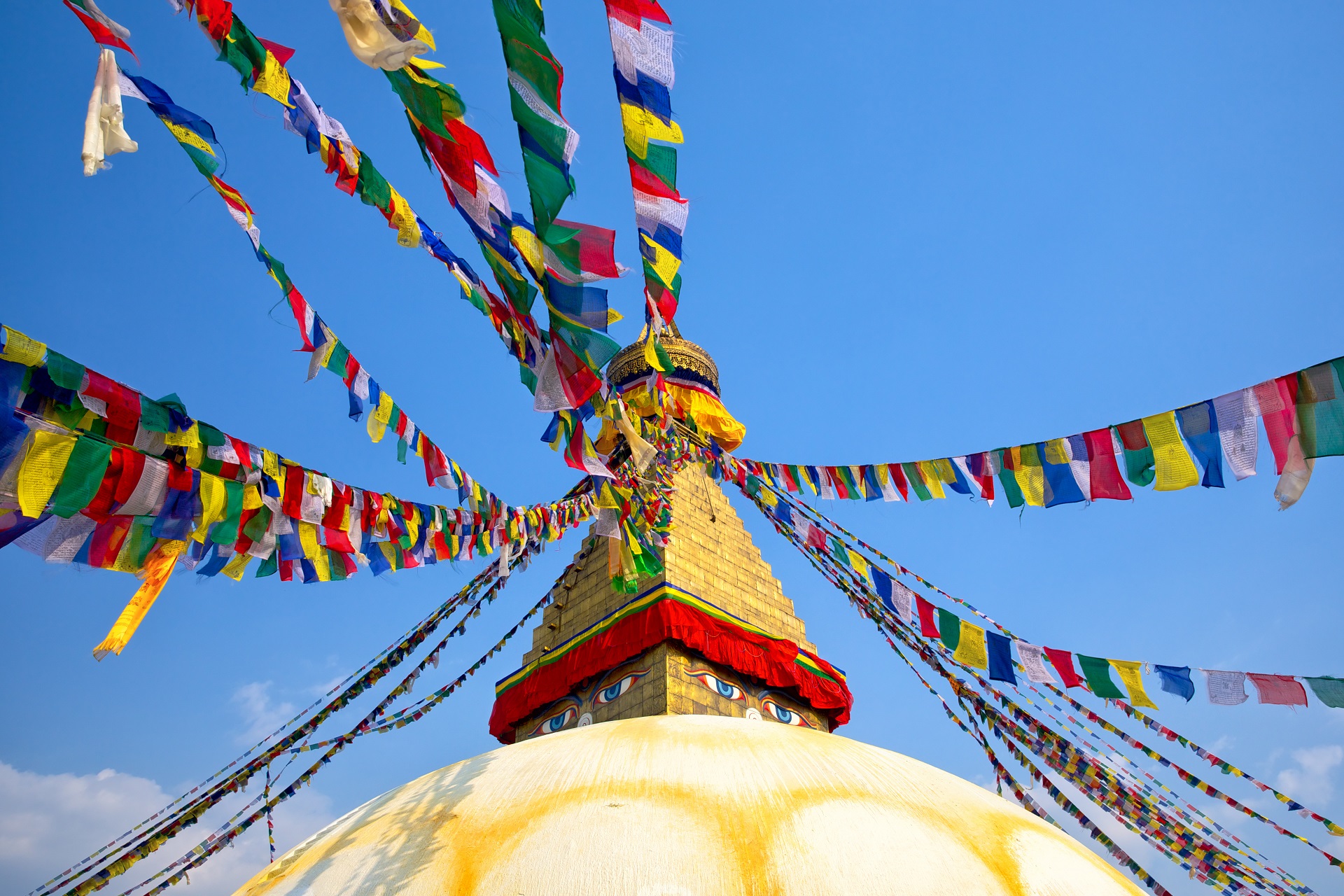- Visit the beautiful sight of Kathmandu, Durbar Square,

HIGHLIGHTS OF THE TOUR
- Pashupatinath temple, Listed as one of the eight Cultural World Heritage Site by UNESCO, Kathmandu.
- Boudhanath: This stupa, eight kilometers east of Kathmandu City is one of the biggest in the world of its kind and one of the most imposing landmarks in Kathmandu.
DETAILED ITINERARY
Day 01- Arrive Kathmandu
Meeting and assistance on arrival at Kathmandu airport.
Rest of the day at leisure.
Overnight stay at hotel
Day 02- Kathmandu
Breakfast at hotel
Post breakfast full day tour of Kathmandu Durbar Square, Swayamhbunath and Patan.
Kathmandu Durbar Square: Listed as one of the eight Cultural World Heritage Site by UNESCO, Kathmandu Durbar Square is cluster of ancient temples, palaces, courtyards and streets that date back to the 12th and 18th centuries. The visit of Durbar Square includes the emple of Living Goddesses, who acknowledges the greetings of the devotees from the balcony of her temple residence, the Hanuman Dhoka Royal Palace, the historic seat of the Royalty; the magnificent Taleju Temple towering 40 meters. The capital takes its name from the giant pagoda of Kasthamandap, which is said to have been built of a single tree. The Kasthamandap has been destroyed in recent massive earthquake and will take some time to rebuild it. It has been the main focal point of the city’s social, religious and political from the Malla kings.
Swayambhunath: Located approximately 4 km west of Kathmandu, Buddhist stupa this is said to be 2500 years old, The stupa which forms the main structure is composed of a solid hemisphere of brick and earth supporting a lofty conical spire capped by a pinnacle of copper gilt. Painted on the four sided base of the spire are the all-seeing eyes of Lord Buddha. This hill is a mosaic of small Chaityas and Pagodas temples. It is one of the holiest Buddhist Chaityas in Nepal and oldest of its kind.
Patan: 5 km from Kathmandu Patan also known as Lalitpur is the city of fine arts, enclosed withing 4 stupas said to be built in 3rd century AD, by Emperor Ashoka. The city retains much of the old charm with its narrow streets, brick houses and multitude of well-preserved Hindu temples, Buddhist monasteries (vihars) and monuments. Here you will visit the Shikahara style Krishna Temple built by King Siddhi Narshing Malla, Hiranya Varna Mahavihar – dating from the 12th century, the three-storied shrine, also known as the Golden Temple. A trip to the Tibetan Refugee Camp and the Handicraft Centre will also be done while visiting Patan, where you will witness the hand weaving of Tibetan carpets and moulding of metal statues.
Overnight stay at hotel.
Day 03- Kathmandu
Breakfast at hotel
Post breakfast Full day tour of Bhaktapur, Pashupatinath and Boudhanath.
Bhaktapur: Perched on a hill at an altitude of 1,401 m, Bhaktapur or Bhadgaon literally city of Devotees, is a major tourist destination. It is 14 km east of Kathmandu on the Arniko Highway that leads to the Chinese border still untouched by rapid urbanization and has managed to retain its brick paved roads, charming red brick houses and way of life that goes back to medieval times. Here you will visit Nyatapola dedicated to tantric goddess, Bhairabh Temple dedicated to Bhariav-the god of terror, Pottery square, The 15th Century Palace of 55 carved windows, Golden Gate etc.
Pashupatinath: Situated 5 Kilometers east of Kathmandu city, Pashupatinath temple is one of the holiest/sacred Hindu temple dedicated to Lord Shiva. Situated amidst a lush green natural setting on the bank of the sacred Bagmati river, the temple built in pagoda style has gilded roof and richly carved silver doors. Visitors will be permitted to view the temple from the east bank of Rivers Bagmati, entrance in the temple being strickly forbidden to all non-Hindus. Pashupatinath is the center of annual pilgrimage on the day of Shivaratri which falls in the month of February / March. Behind the temples are the cremation grounds. Chronicles indicate the temple existed before 400 A.D.
Boudhanath: This stupa, eight kilometers east of Kathmandu City is one of the biggest in the world of its kind and one of the most imposing landmarks in Kathmandu. It stands with four pairs of eyes in the four cardinal direction keeping watch for righteous behavior and human prosperity. This Buddhist stupa was built by King Man Dev at the advice of Goddess Mani Jjogini. It is built on an octagonal base inset with prayer wheels. The shrine is ringed by houses of Lamas or Buddhist priests. This is also the center of Tibetan Buddhism.
Overnight stay at hotel.
Day 04- Kathmandu
Breakfast at hotel
Post breakfast you will be transfer to airport to board the flight for onward destination.
